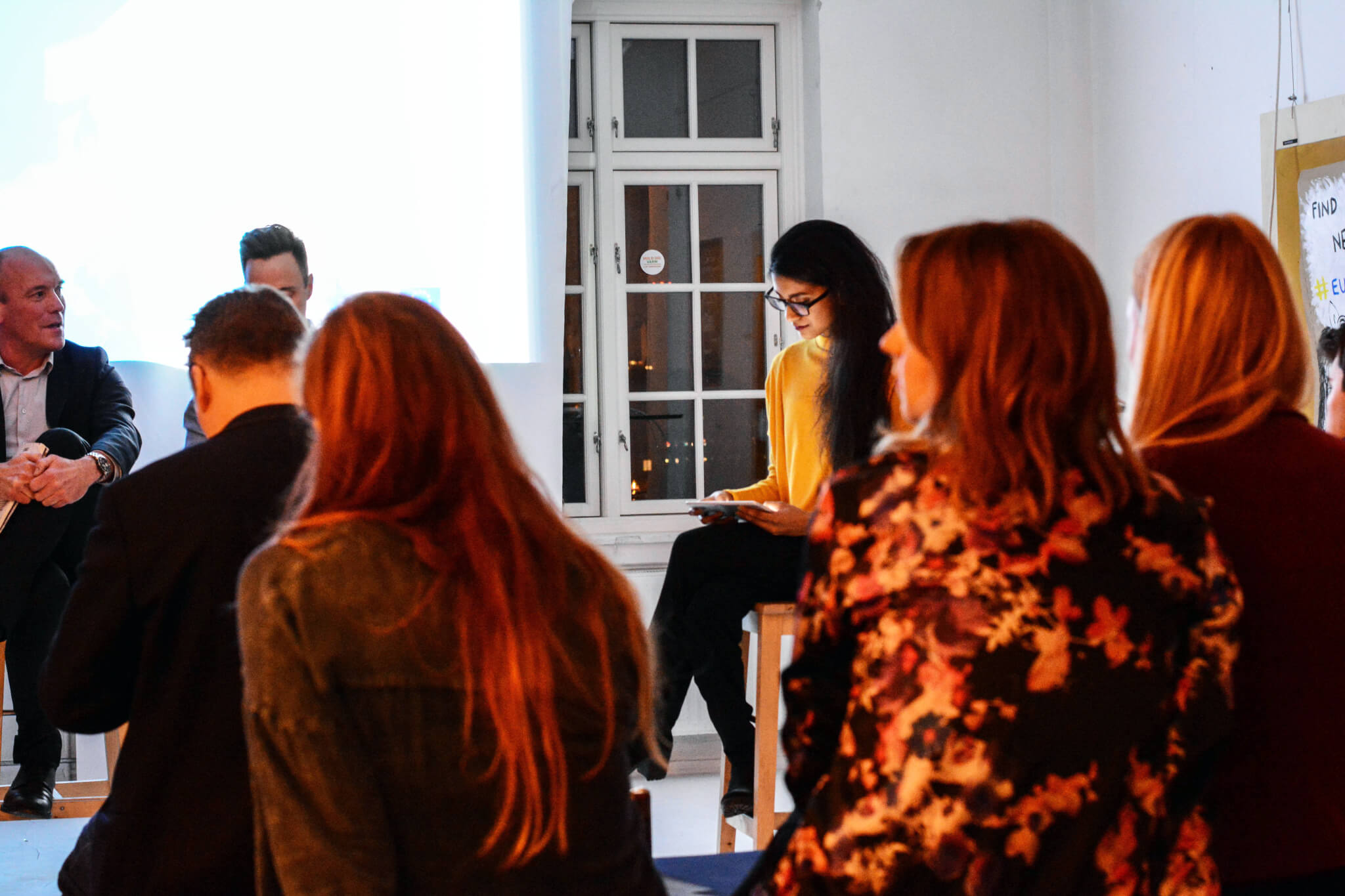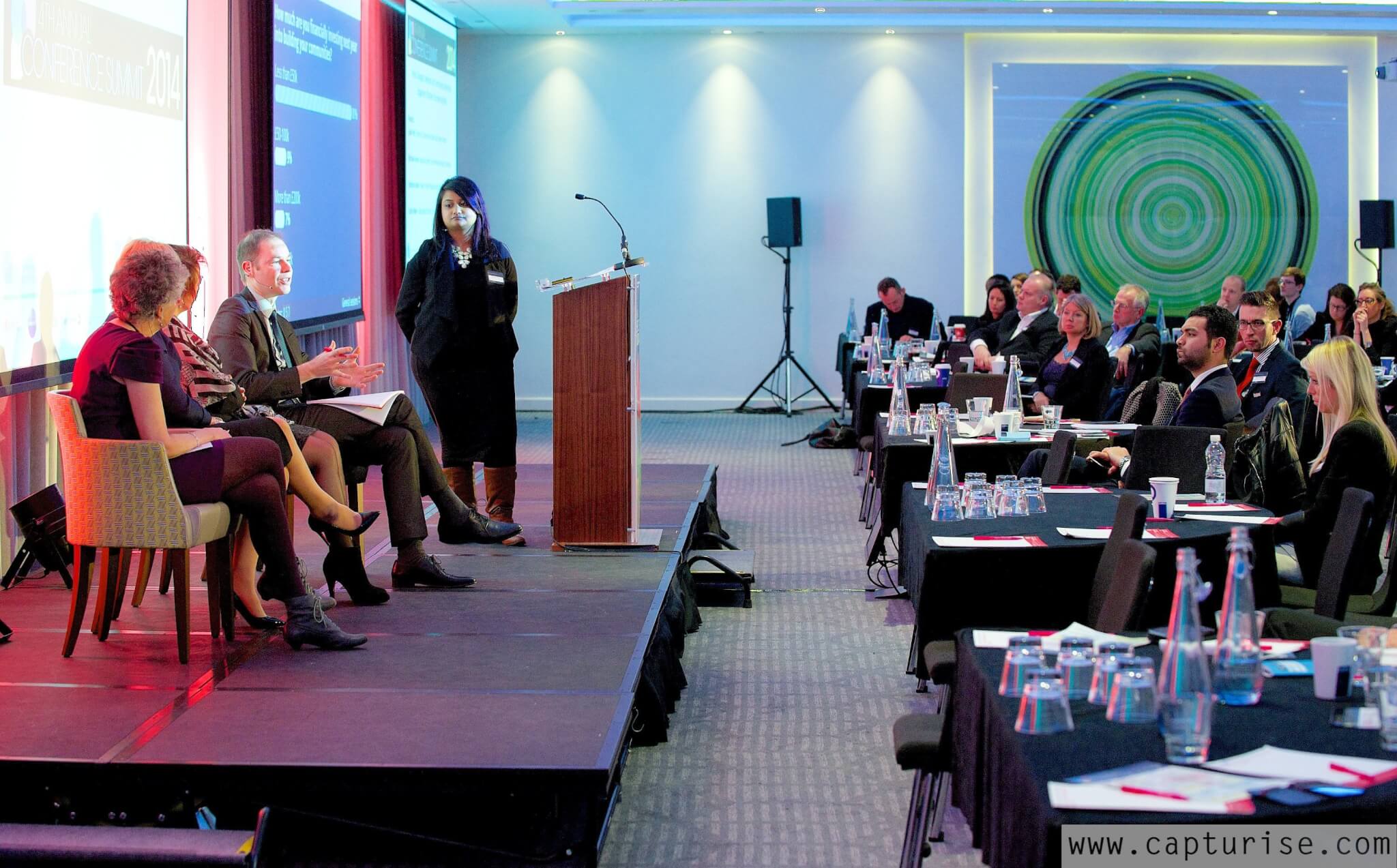At one of our workshops, I brought up the topic of panel discussions. The moment I mentioned the word ‘panel’ people rolled their eyes. One of the participants raised a hand and said:
“I hate panels because there is always a barrier between the panelists and me. It’s like they are talking just to themselves and I’m there to listen to their pitches.”
And she is by far not alone.
Scott Kirsner, the editor of Innovation Leader and a seasoned panel moderator, commented bitterly in his article for HBR:
“The panel discussion was invented by someone who liked to sit three feet above his audience, talk with five of his closest friends for an hour, and barely acknowledge that there are 100 other people in the room.”
It seems that the reputation of panels is not held in the highest esteem. But with a few moderation tricks and a meaningful use of technology, you can turn panel discussions into an engaging experience. Below I share some great practices of how event planners and moderators used Slido to increase interaction at their panel discussions.
Get to know your audience to tailor the content
Oftentimes the moderators, as well as panelists, have only a vague idea about who is sitting in front of them, what the audience background is, what position participants hold in their companies or how much experience they have in the field. Without knowing the audience, it’s quite a challenge for presenters to tailor their responses in a manner that truly addresses attendees’ needs.
“Relevant content is the stepping stone to a great interaction.”
But you can easily change this situation by running a few polls that will provide you with the necessary insights about your audience. So subsequently you can frame the debate based on the poll results and make sure that it is relevant. After all, relevant content is the stepping stone to a great interaction.

Case Study
At the Startup Europe Week event in Copenhagen, moderator Sofi Sitha opened the panel by asking the young entrepreneurs What best describes your current situation?. She revealed that 45% of the audience doesn’t have a startup yet and that 25% is only in the idea stage. These findings radically changed the angle of the whole discussion.
Instead of focusing on the challenges that mature startups face, the panelists rather talked about forming the company and how to get it off the ground.
For great interaction, integrate audience questions early
As one of our workshop participants pointed out, there is often a barrier that raises between delegates and panelists.
This is because, in most cases, moderators begin to take audience questions only in the final minutes when everyone is already tired and frustrated by a lack of interaction. There is no need to wait so long. Scott Kirsner advised: “Involve the audience within the first five minutes.”
Simply have your moderator introduce the guests, kick off the discussion with a couple of researched questions and then start taking questions from the audience. By using Slido or similar tools, you can involve literally everyone, not only the extroverts who are not scared to raise their hand. And by allowing people to upvote the questions, you can focus on the topics that the audience is most eager to discuss.
“Involve your audience in the panel discussion within the first 5-10 minutes.”
Case Study
The organizers of the Mindfulness in Schools Conference decided to use Slido to let the audience pose questions for the guests on the Why bother? Teachers & Pupils Tell their Stories panel.
Moderator Sir Anthony Seldon started asking questions from Slido at the very beginning of the session, right after the introduction of the panelists and the opening question. Since the audience was involved from the very start, this 45-minute long session brimmed with interaction, receiving 54 questions and more than 250 likes.
Split the panel into parts to keep people engaged
Keeping participants focused is not easy. Neurologists argue that people are capable of paying attention for only 20 minutes straight before their minds start to drift. So how do you maintain people’s attention during the 40- to 60-minute panel discussion?

Case Study
Moderator Bansri Shah tackled this challenge by splitting her panel at the Conference Summit in London into four 10-15min long parts.
By running a live poll before each sub-section, she created soft breaks for the audience to regain attention for the following section. It was only after the results were collected that she prompted panelists to provide their comment and views. Also by subdividing the panel discussion into smaller sections, she helped the audience to navigate easier in the conversation and thus remain engaged.
Find out how audience opinion evolves during the debate
Every great debate is based on contention in arguments. It’s exactly that conflict of opinions that keeps people on the edge of their chairs. Consciously or subconsciously they root for one or the other camp.
The most engaging panels we witnessed were, therefore, the ones that managed to bring in people with opposing arguments. The panelists then enter the debate with one goal in mind — to prevail over the other party.
Case Study
The debate Brand Valuation: Brilliant or Bull****? at the Festival of Marketing was one such example.
Marketing Week columnist Mark Ritson called into question the validity of brand valuations and three of the largest valuation companies joined him on the stage to defend the process.
After a heated discussion, the moderator ran a live poll to evaluate the discussion and let the audience decide which camp convinced them.
Alternatively, you can run a poll at the start of the panel to reveal the audience background on the issue and set up the framework for what they might expect to hear from the panelists.
We saw closed-ended questions work the best for building up the tension since the audience can only answer YES and NO and thus naturally choose only one of the camps. In the end, you can run the same poll again and compare its results with the initial voting to find out how the opinions shifted as well as to reveal which panelists were more convincing in their arguments.
In Conclusion
Involving the audience early in the panel is critical for making the discussion both engaging and relevant. By using tech tools, you can allow literally everyone to take part in the conversation as well as let people upvote the topics they are eager to discuss. And finally, gauging audience opinion with live polls adds an extra layer of interactivity in order to truly ace the panel.




